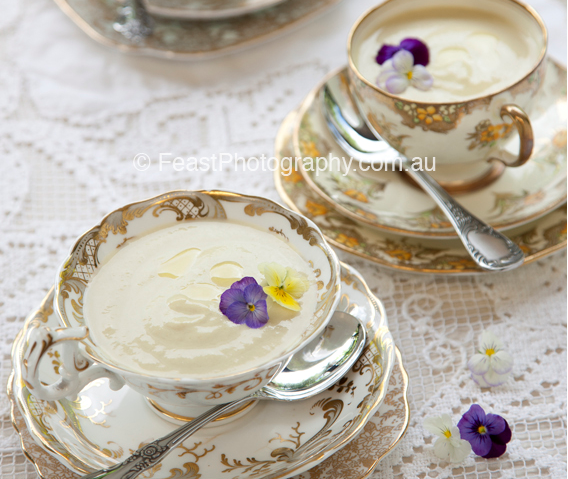This may be the recipe that started it all, but it has got me into some trouble since. When I first wrote it out, I used the quantities that I would have used once, although perhaps not now. My theory is that if you are going to mess up the kitchen, you might as well make the mess worthwhile. So I would cook for a multitude and freeze for a multitude.
Then Joe and Pearl Saragossi asked me if I had a good lamb casserole recipe. I told them about this one and promised to print out a copy. When I asked if they had enjoyed it, Joe said, “That recipe is for twenty people. Pearl and I eat very little these days.” (You can’t please all of the people all of the time!) Well, I’m not at all sure that four kilograms of lamb, including bones, would have fed twenty people, even with pigeon-sized appetites, but I do take his point. (I have, since, made it to feed twenty people, and the original quantities would not have done!)
I think it was Georgie Lewis who gave it it’s other name, Graveyard Stew. I objected to the ‘stew’ label for a while, then finally gave in to public pressure. If people like it enough to re-name it, why complain? The empty plates certainly resemble a graveyard.
So, here it is, re-hashed.
By now I am sure you are well aware of my views regarding the treatment of aubergines before cooking. Unless the aubergines are old with dark, prominent seeds, they do not need to be soaked in milk or dredged in salt. Buy young aubergine, with smooth, shiny skins and cut them as you are about to use them.
The proportion of leg chops to forequarter and neck chops is not really critical. The leg chops have plenty of meat, the neck chops are full of flavour and the forequarter chops are somewhere between the two.
Oil for cooking
2 – 3 large onions, finely chopped
2 kg lamb leg chops
1 kg lamb forequarter chops
1 kg lamb neck chops
2 tablespoons plain flour
2 medium sized aubergine, young with shiny, unwrinkled skins
½ bottle of Italian pureed tomatoes
Chicken or beef stock, or a combination of the two
3 tablespoons tomato paste
1 tablespoon brown sugar
A dash of red wine vinegar
Salt and freshly ground pepper
Preheat the oven to 180C. Peel and slice one of the aubergines about 1 cm thick. Drizzle a little oil into a baking dish and place aubergine slices into the oil. Spray or drizzle with more oil and bake until slices are tender. Remove from baking dish and drain on absorbent paper.
Repeat with remaining aubergine. When all aubergines are cooked and drained, dice coarsely.
Meanwhile, cut excess fat from chops. Heat oil in a heavy-based frying pan and sauté onion until transparent. Transfer to a heavy-based casserole. Add a little more oil, if necessary, to the frying pan, and brown chops, in batches. Transfer chops to the casserole as they are browned. Add flour, working it down amongst the chops so that the fat on the chops absorbs it and the remainder thickens into the sauce without lumping.
Add coarsely diced aubergine to the casserole with the onion and the chops. Add a little more flour and make sure it is absorbed by the fat in the aubergine, onion and chops.
Add tomato puree, tomato paste, brown sugar, red wine vinegar and enough stock to cover. Season with salt and freshly ground pepper.
Make sure oven is still preheated to 180C and add casserole, covered. Cook for approximately 2 hours or until the lamb is tender. (The neck chops will take the longest to cook.)
Remove from oven, cool and refrigerate overnight. Skim all fat from surface of casserole.
To serve, heat gently until casserole reaches a simmer and meat is heated through.







